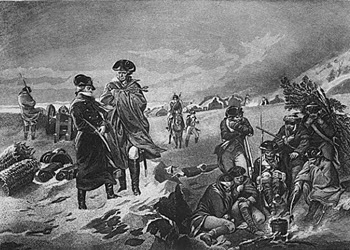Updated January 19, 2023
About American Revolution
The American Revolution, also known as the United States War of Independence or the American Revolutionary War, was a 1775–83 revolt for which 13 Great Britain’s North American colonies obtained political independence and established the United States of America. The American revolution came after more than a decade of rising alienation between the British crown and a significant and prominent part of its North American colonies. It was by British attempts to impose more influence over state matters after a lengthy period of foreign rule. To understand the American revolution, you need to know what caused it and the consequences people faced.
(Image Credit: Archives)
Causes of the American Revolution
From north to south, the thirteen American colonies were New Hampshire, New York, Massachusetts, Rhode Island, Connecticut, New Jersey, Pennsylvania, Delaware, Maryland, Virginia, North Carolina, South Carolina, and Georgia.
The various reasons why the American revolution took place in these colonies are:
- Under the mercantilism regime, Britain’s colonies formed as a source of raw materials. Mercantilism is an economic policy that increases a country’s wealth through exports.
- Raw materials were shipped from the thirteen American colonies to manufacture finished goods for sale outside of Britain, improving British mercantilism and economic prosperity.
- Though the colonies gained profit from selling raw materials, the majority of the finished items they required were acquired from Imperial Britain and supplied to them at inflated prices.
- It resulted in a net economic loss, with much of the riches in gold and silver eventually returning to the home nation, Britain.
- The British Empire enacted these rules to make the American colonies more reliant on British exports and finished goods. Tobacco, sugar, cotton, and iron were all required to be sold solely to British merchants.
- The British participation in the global struggle recognized as the Nine Years’ War (1754-1763) and the American engagement in the French and Indian War were both costly efforts. Great Britain hoped to boost money to cover war expenditures by raising taxes on the American colonies.
- The majority of Britain’s tax burden was transferred to the American colonies, fueling insurgent sentiments.
Effects of the American Revolution
- The Treaty of Paris, a collection of agreements signed by both sides, ended the war. Britain acknowledged the United States of America as a sovereign nation and gave the new government land.
- The Articles of Confederation, a new form of government, were drafted in 1776-77 and approved by Congress on November 15, 1777. The states only partially supported the articles on March 1, 1781.
- This new government organization linked the Continental Congress’s original administration and the federal government established by the United States Constitution.
- The Constitution amended the Articles of Confederation in 1787. The Constitution established the country’s core political structures and the three levels of government: judicial, executive, and legislative.
Facts
- The war began as a civil war inside the British Empire till early 1778, when France intervened on behalf of the colonists.
- In 1779, Spain joined the colonies’ cause. The Netherlands supplied both formal recognition and financial assistance to the United States.
- The British army had around 42,000 men. Approximately 30,000 troops were acquired from several German princes by the British government.
- Britain imposed many taxes on the colonists, including the Sugar Act (1764), Stamp Act (1765), and Townshend Acts (1767), to obtain funds for the British crown.
- The turning point in the American revolution occurred with a series of wars termed the Saratoga Campaign. It took place in the year 1777.
- King George III directed British troops to Massachusetts to suppress the colony’s unrest and disobedience. The Boston Massacre began on March 5, 1770, when British soldiers opened fire on a gathering in Boston, killing numerous Americans.
Conclusion
Revolutionary involvement is risky, and once the revolution is successful, it is difficult to exclude people who did not join in for broad benefits. This statement answers why uprisings are usually chaotic and deliver mixed outcomes. An example is the American Revolution, which evoked the citizens’ ideals of liberty, independence, equality, and natural rights. The peasants and farmers who were involved in the uprisings faced the same. Their lives were complex and oppressed, but they took the risk, which is how they gained their rightful independence.



